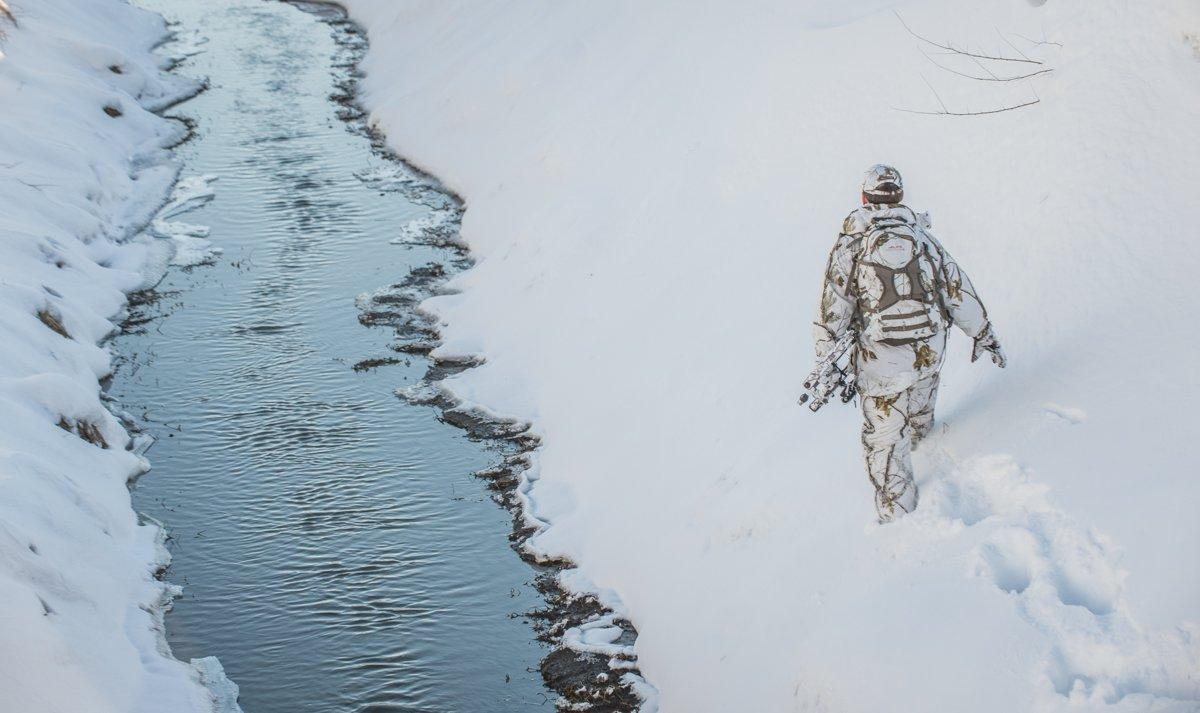Are You Spooking Deer Between the Truck and the Treestand?
People often get wrapped up in wind direction at stand sites when most of the time, it's between the truck and the treestand that we spook the most deer. If that's the case for you, it might be time to improve entry and exit routes, or change them altogether. Here are 10 ways you can do just that.
I just recently proved to myself just how important good entry routes are. A couple weeks ago, I eased into a stand that I thought would put me in a good position to kill my target buck. So I slowly made my way to the stand, checking the wind as I went. I reached the stand and silently climbed up. As soon as I got settled, I looked up and there he was. The buck I was after was bedded 45 yards in front of me in thick cover. Want to hear the craziest part? I'd walked within 15 yards of the buck on my way to the stand. He never knew I was there.
I didn't kill the deer. It stood up and fed off away from me. But the encounter reinforced the importance of good entry and exit routes.
1. Use Drainages and Ditches
Both drainages and ditches are great for walking to and from the stand. Their low-lying presence hides your approach from prying eyes and conceals you from deer that might be nearby.
2. A Standing Corn Shield
Planting standing corn on either side of your entry and exit routes is a great way to conceal yourself. The downside is that deer feed on corn, and will become attracted to your routes, which you don't want to happen.
3. Plant Egyptian Wheat
I prefer this to standing corn. Deer don't eat it, so you don't have to worry quite as much about bumping deer along your route. It grows as tall as 7 or 8 feet and keeps you concealed very well.
4. Cut a Path Through Cover
I like to cut paths through grassy fields and other areas of thick cover. Having this trail with tall vegetation on each side will help keep you hidden. Just make sure you steer clear of any known bedding areas.
5. Walk the Creek Beds
Many places people hunt have some body of flowing water. Rivers, creeks, streams, branches and other bodies of moving water provide excellent entry and exit route opportunities. They keep you hidden as you move in and out of the field.
6. Walk Slow
Deer hear only slightly better than we do. But they're much better at picking up sounds not natural to their environment, meaning they know a two-legged animal (humans) when they hear one. Walk very slowly to your stand and make no sound. Don't crunch leaves. Don't break sticks. If it takes 30 minutes to walk 200 yards, so be it. It's better than spooking deer.
7. Lose the Light
I rarely walk to and from the stand with a flashlight anymore. It spooks too many deer. Instead, I allow my eyes to adjust to the dark and then proceed. You'd be amazed just how well you can see in the dark given enough time for your eyes to adjust. The exception to this rule is when hunting on public land and dangerous terrain.
8. Avoid Bedding Areas
Stay away from bedding areas when walking out after a morning hunt and when walking to the stand before an afternoon sit. These two times are when deer are bedded and getting too close will destroy chances of success.
9. Avoid Feeding Destinations
Stay away from feeding destinations when walking to a stand before a morning hunt and when walking out after an evening sit. Failing to heed this advice will cause fewer deer sightings as the season goes on.
10. Play the Wind
Always be aware of which way the wind is blowing. If it's blowing toward deer, regardless of the time of day, you should back out and go a different way.
Click here for more deer hunting articles and videos.
Check us out on Facebook.







